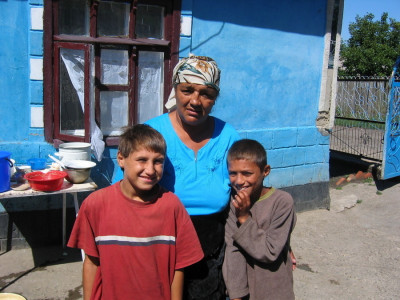Global Initiative: IOM-UNDP Seed Funding to Fast-Track Joint Response to the Socio-Economic Impact of COVID-19
David Khoudour, UNDP HQ, Crisis Bureau - Recovery Solutions and Human Mobility Team, david.khoudour@undp.org
Manuel Hoff, IOM HQ, Migration and Sustainable Development Unit, mhoff@iom.int
Related Sustainable Development Goals and Global Compact for Migration Objectives
Summary
IOM and UNDP joined together with local and national authorities in 17 countries in Africa, Asia, Europe and Latin America (Bangladesh, Belarus, Burkina Faso, Costa Rica, El Salvador, Guinea, Indonesia, Kazakhstan, Kyrgyzstan, Lesotho, Malaysia, Mozambique, Peru, Sudan, the Republic of Moldova, Turkey, Uganda) in 2020-2021 and 2021-2022 for two rounds of the Joint Seed-Funding Initiative.
In the first round, projects supported local communities, migrants, and displaced people during COVID-19 in 9 countries with a view toward understanding the impact of the pandemic on migrants, communities, and local development outcomes and identified ways forward for including migrants in local, national and global COVID-19 response plans, projects and initiatives. In the second round, support has been provided to 10 country offices to implement joint actions that advance programming for the response and recovery from COVID-19 and the achievement of the 2030 Agenda for Sustainable Development.
These projects in local communities enhanced cooperation with local and national actors to accelerate migrants’ inclusion in recovery through community awareness campaigns and coordination mechanisms that helped to enhance social cohesion among diverse communities and formulate joint roadmaps for action and partnership.
The initiatives build off of the partnership between IOM and UNDP. In October 2020, the Principals of the International Organization for Migration (IOM) and the United Nations Development Programme (UNDP) agreed on priorities for a reinforced partnership between the two agencies at country, regional and global levels. This initiative was among the first steps in translating the commitment into practice.


Key objective
The objective of this initiative was to ensure that COVID-19 response plans and activities capture the specific vulnerabilities of migrants and displaced populations in the wake of the pandemic, while also building on their agency and assets for societies and economies, acknowledging that they are part of the solution to recover better from COVID-19.
Main activities
Click on each country to find more details on our initiatives.
The first round of the initiative was comprised of projects in:
- Bangladesh,
- Belarus,
- El Salvador,
- Guinea,
- Indonesia,
- Kyrgyzstan,
- Lesotho,
- Republic of Moldova and
- Peru.
The second round of the initiative was comprised of projects in:
- Burkina Faso,
- Costa Rica,
- Indonesia,
- Kazakhstan,
- Malaysia,
- Mozambique,
- Peru,
- Sudan,
- Turkey and
- Uganda.
Key successes or innovative factors, good practices and lessons learned (if available)
Despite tight timelines, IOM and UNDP Country Offices managed to achieve a great amount of progress in strengthening the partnership on the ground, showcasing how working together can catalyze innovative possibilities and new solutions at the country, regional and global levels. An analysis of the partnership through a survey and stocktaking workshop in April 2021 showed that the initiative was considered useful by Country Offices to build joint perspectives for COVID-19 recovery, sustainable development and migration (e.g. Moldova, where Country Offices identified a joint roadmap), strengthen synergies between different analysis and policy tools (e.g. Bangladesh and Indonesia) and set a joint strategic course not only for this Seed Funding but also to firmly establish a mutually beneficial partnership that is essential for maximizing the potential of migration for sustainable development. Similar results were obtained through a survey and stocktaking workshop held in February 2022, which showed that Country Offices found the communication and collaboration to be fruitful and that the joint collaboration has allowed the two agencies to better understand each other’s mandate and learn from each other.
Key success factors of the collaboration included: Dividing tasks by the "comparative advantage" of each agency, co-design of the project and joint review of the Terms of Reference and all outputs; frequent and close communication, including designating technical focal points in each category, coordinated approach to engagement with service providers, local and national authorities, civil society etc.
Beneficiaries
Vulnerable migrants, returning migrants, migrant workers and their households, informal cross-border traders, internally displaced people, border communities, host communities, local and national governments, civil society experts, migrants' and diaspora associations







